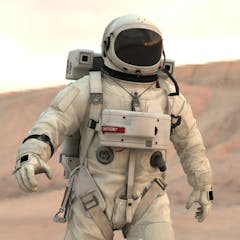
Articles on Hubble Space Telescope
Displaying 1 - 20 of 46 articles

Hubble’s technical issues continue. But through some clever engineering, the telescope can continue operations with just 1 gyroscope.

Astronomers Vicent Martínez and Bernard Jones explain the mystery of the Hubble tension, and why it matters so much for our understanding of the universe, on The Conversation Weekly podcast.

A new hypothesis suggests that the universe may be twice as old as we had believed. Observations from the James Webb Space Telescope provide new information on the rate of the universe’s expansion.

The universe used to be filled with a hydrogen fog, before early stars and galaxies burned through the haze. Astronomers are studying galaxies that tell them about this period in the early universe.

Both Stephen Alexander’s elementary teachers and televised NASA missions throughout the ‘60s influenced his journey into science. He recounts NASA’s legacy, 65 years after the agency’s inception.

The current race to the Moon is opening up opportunities for lunar astronomy.

Through direct comparison with images from Hubble, you can start to see the exquisite detail and clarity Webb provides.

Mars is the fourth planet from the Sun and one of our closest neighbors in space. But it’s not a very welcoming place for an Earthling to visit.

A glimpse of a distant Jupiter-sized exoplanet sheds light on how gas giants form.

The Hubble Space Telescope could gaze back 13.4 billion years, and with the JWST we expect to improve on this possibly to 13.55 billion years.

Clouds, hellish temperatures, endless nights? Characterizing the atmosphere of exoplanets, planets that orbit stars other than the sun, is a formidable task.

Plus, the tactics the food industry is using to boost sales of ultra-processed foods in middle-income countries. Listen to The Conversation Weekly.

India may land on the Moon this coming year, while Nasa will launch its new, powerful rocket farther into space than any other human rated spacecraft.

Fantasy fiction provides more than escapism for young readers.

Thirty years ago the Hubble Space Telescope began snapping photos of distant stars, providing a time machine that has taken astronomers back to when the universe was less than a billion years old.

New research using the Hubble Space Telescope reveals that galaxies may be forming at faster rates than previously believed.

Poets and scientists don’t occupy separate poles in the quest to understand the universe. In many ways, they sing from the same hymn sheet.

35 years ago Sally Ride became the first American woman in space. But rather than focus on her own extraordinary achievements, her passion became boosting the number of girls pursuing STEM. Another pioneering astronaut remembers her friend and colleague.

Astronomers report the first ever measurement of light bending around a star other than our own.

People used to think that when they looked up at the night sky, they were seeing all of space. Then American astronomer Edwin Hubble found out something so amazing, NASA named a telescope after him.
